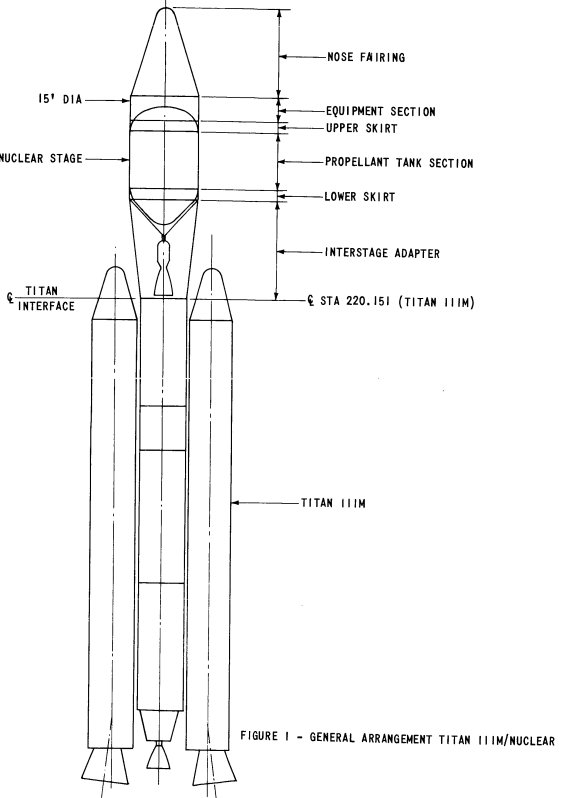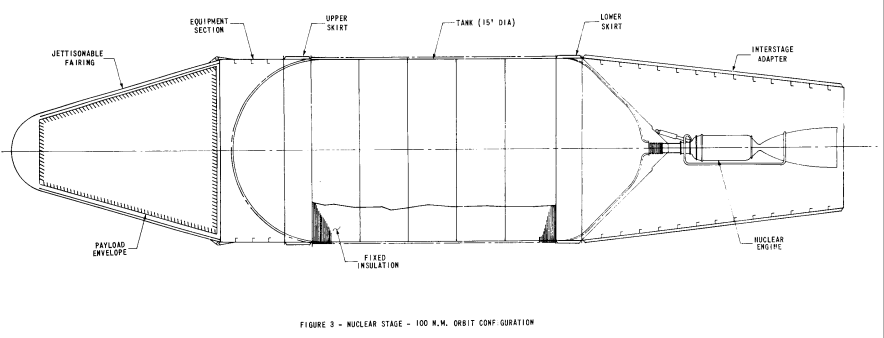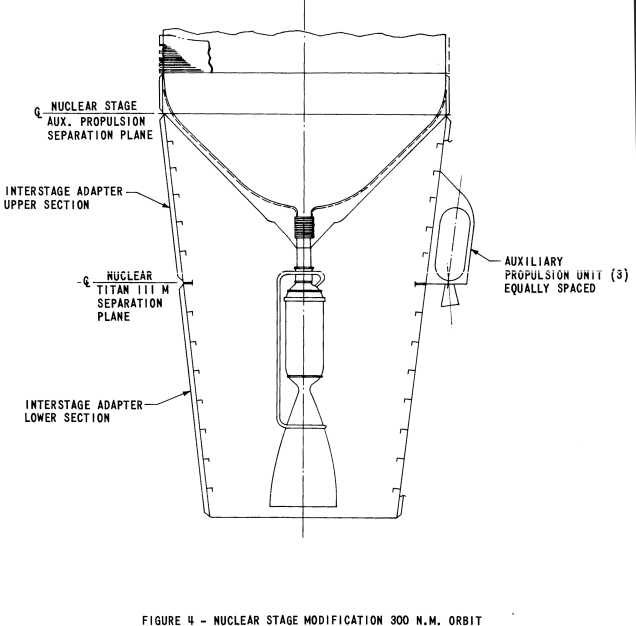A Bellcom study from ’69 for a Titan IIIM (stretched core, 7-segment solids, designed specifically to launch the MOL space station) with a nuclear upper stage concluded that it basically just wasn’t worth it. For missions within cislunar space, the payload advantage compared to a Titan/Centaur was measurable in dozens of pounds; for deep space missions the advantage creeped up and was noticable. But the development costs, along with the requirement to shield the payload, , negated any advantages.
When it comes to nuclear propulsion… bigger IS better. The nuclear engine and its shielding are going to weigh a lot regardless of whether they are attached to a honkin’ huge manned interplanetary vehicle… or some dinky upper stage like this.
8 Responses to “Nuclear Titan”
Sorry, the comment form is closed at this time.



When they were looking into the Timber Wind nuclear rocket engine, one of the proposed launch vehicles was a Titan II with a nuclear upper stage.
THX for Information
next to the above-mentioned Problems was also this:
for GTO mission the stage stay in elliptical orbit (200×36500 km)
with orbital decay the nuclear Stage hit earth atmosphere
even with those disadvantage, the Idea return over and over again
like Timberwind proposal in 1990s
Michel, all they had to do was save a little fuel after the GTO boost mission was done and use it to raise perigee to a long term acceptable hight. And if designed right, come back later and salvage it for other in-space missions.
Hadn’t thought of the reentry problem regarding Earth orbital missions; that pretty much screws the pooch for its use in that manner from a political point of view.
I dug out an old Timberwind article from the April 8, 1991 AW&ST, that shows a Titan III derived launch vehicle using three 75,000 pound Timberwind engines on its core stage that are air-lit after the SRBs carry it to altitude; payload to LEO is 140,000 pounds. Nuclear ignition occurs at 251,317 feet at a velocity of 7,428 fps, 156.58 seconds after liftoff.
Pat,
I’d like to see that Timberwind drawing sometime. Well I guess the Air Force is in the habit of recycling old ideas.
You examples like this concept and then Timberwind. Or like the Dyna-Soar and SAINT concepts are basically being brought out in the form of the X-37B.
Some ideas just never go away.
It’s a Titan IV derivative BTW.
The thing is on a very faded old photocopy. I doubt you could even scan it in a legible form.
The name of the article was “Particle Bed Reactor Central To SDI Nuclear Rocket Project”.
The other drawing is of a Atlas-Centaur with the RL-10 engines replaced by a single Timberwind engine, and a vastly stretched propellant tank, that would stand 172′ tall (the Titan one is 233′ tall).
The Atlas one can carry 27,000 lbs into LEO, and ignites the nuclear stage at 163,000 feet 113 seconds after liftoff, at a velocity of 6,940 fps
> I’d like to see that Timberwind drawing sometime.
I’ve got a half-ass decent copy; will scan & post.
Besides AW&ST, I seem to remember seeing pretty much the same drawing in other publications at the time.
The Federation of American Scientists got involved big time in all of this after scientists and people in the first Bush administration leaked info on it to get the project killed; this resulted in the Inspector General of the DOD jumping on the program and auditing it: http://www.fas.org/sgp/othergov/dod/tw.pdf